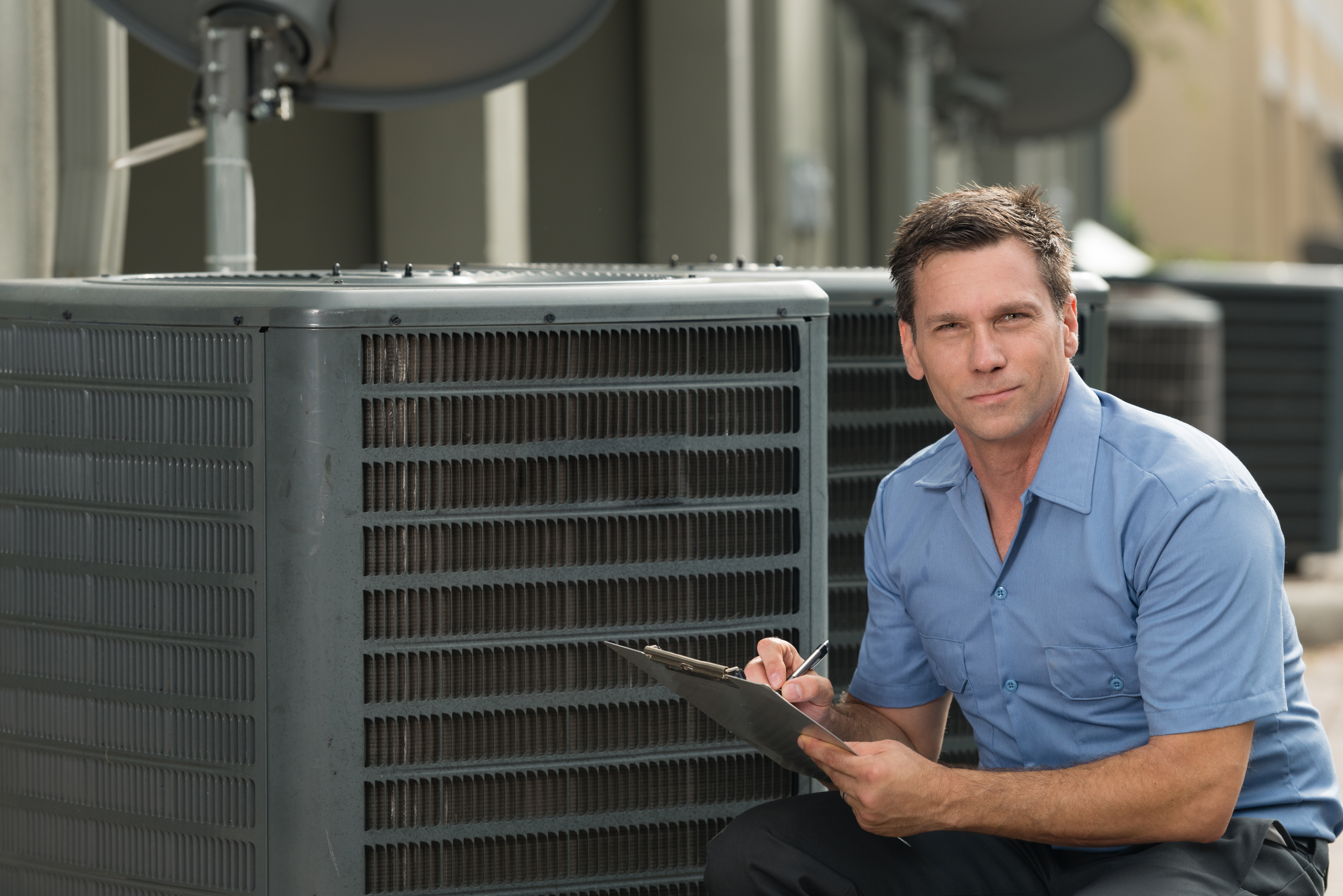AC air conditioner Installation
If this is your first outing when it comes to installing a new air conditioning system in your home, this article will give you some basic information on:
- The cost of installing an AC air conditioning system
- Selecting and sizing a unit
- What load calculations and BTUs are and why they matter
- What EER and SEER are and how they influence air conditioning efficiency
- Why ductwork is an essential component of air conditioner units
Cost
Depending on whether you need a central air conditioner unit installed or a window central air conditioner add-on, you can expect to pay as little as $150–$300 for a window unit, or as much as $7,000 for a central air conditioner unit (this figure depends on the square footage of your house). If your house needs ductwork you can about double your cost. The total expenditure for the job will depend on the type of system you choose.
System Types
Central Air Conditioning Unit
This system uses a one-two punch, combining ductwork with your heating system to air condition your entire home.
Split System
The split system is of two types:
- A ductless system
- A two-unit system: one unit installed inside, the other installed outside
Single-Stage and Two-Stage Cooling
AC air conditioning units can also be categorized as single-stage and two-stage cooling. Reliant on the climate in your area, a single-stage or two-stage cooling unit will be recommended by the HVAC air conditioning repair technician.
Single-Stage
Single-stage runs at maximum capacity when the indoor temperature exceeds your thermostat’s setting. Then it shuts down until the temperature exceeds the thermostat setting again, cycling repeatedly in this manner. Single-stage is best for hot, muggy weather.
Two-Stage
Two-stage air conditioning units operate at maximum capacity, or two-thirds of maximum capacity. Depending on the temperature inside your home it will choose either single-stage or two-stage. Operating at two-thirds of maximum capacity will help save energy while simultaneously cooling your home. Two-stage is less noisy, produces purer air, and is cost-efficient.
Home Size and BTUs
BTU is an acronym for British Thermal Units, and are a factor in the type of air conditioning unit you’ll require for your house, based on its size.Another metric that relates to size is the load calculation. Load calculation relates to heat-gain affected by:
- Climate
- Insulation
- Window / door locations
- Direction your house faces
- Square footage
Load calculation breaks down into two types:
- Whole house – uses ductwork already in place
- Room-by-room – determines duct sizes for every room and the duct system’s configuration
Good to know is if the air conditioning unit is undersized the unit won’t be capable of cooling the house completely when it’s sweltering outside. And the cost to run it will increase because it will take longer to cool down the space.If the unit is oversized, it will also be more expensive to run due to the need for more electricity. Lowering humidity will also be an issue. Cooling the air too quickly interferes with the volume of air circulation, which slows down moisture extraction, leaving the air feeling sticky.
EER and SEER
EER, the energy efficient ratio, applies to the cooling efficiency of air conditioning units. Each air conditioner is certified according to its EER.SEER, seasonal energy-efficiency rating, determines the number of BTUs an air conditioning unit will displace per watt of electricity used up. A high SEER rating of 13 and above means the air conditioner unit is cheaper to run, will usually be of higher quality, contains more safety features, is less noisy to operate, and less energy will be expended.You can typically expect to pay more for an air conditioner with a higher SEER. Federal government regulations now require new AC air conditioning units meet a SEER 13 minimum rating.
Installation
If you’re going to have either a central or split air conditioner installed, a HVAC air conditioning repair technician will be necessary for the installation process, Why a professional? A component of the air conditioning unit is refrigerant, a toxic chemical. Refrigerant cools the air and it can be only be handled by an EPA-licensed HVAC air conditioning repair technician.A HVAC air conditioning repair technician, who performs the initial assessment and determines the type of air conditioner you need, heads a team of assistant repair technicians. They will aid in doing the wiring, ductwork, and other operations necessary to install the AC unit. All of this will cost you more coin. Ask the HVAC air conditioning repair technician if purchasing the AC air conditioning unit yourself will cut corners on expenses. You could also ask them if the heating system ductwork already in place can be used to further defray your expenses.
Ductwork
Ductwork is necessary to support the air conditioning unit with air flow. If your home is relatively new you’ll have ductwork already installed. But if you’ve a much older home it’s probably outfitted with a convection heating system or baseboard heater sans ductwork. In this instance, in order to install a central air conditioning unit, you’ll need to also install ductwork and venting.
Warranties
Central air conditioners have a 5–15-year manufacturer’s warranty, covering equipment and parts. The contractor’s warranty, also included, covers labor when the air conditioner needs repairing.You can also purchase an extended warranty, but if you maintain your AC air conditioning unit religiously, the prohibitive cost of an extended warranty may not be necessary, saving you money.

